
Cabo de Gata
One of the most beautiful places in the World
Land and sea UNESCO biosphere reserve
The Cabo de Gata coastline has some of the most tranquil and pristine waters in Spain
Parque Natural Cabo de Gata
In 1987 nearly 50,000 hectares of land, sea, volcanoes, dunes, cliffs and a wide range of aquatic life, flora and fauna was declared by (1) UNESCO as a biosphere reserve; 12,000 of which are in the sea between zone and 60 metres depth. The Cabo de Gata landscape is seen nowhere else in Europe and enjoys many environmental and geological resources which are now being enjoyed by an increasing number on tourists. The area is populated by less than 5,000 inhabitants but welcomes more than 500,000 tourists every year.
The Faro de Cabo (lighthouse) stands at the tip of the peninsula known as Cabo de Gata and is the start of a beautiful coastline that stretches 60 kilometres north to the Playa de Los Muertos, near Carboneras. Located on the south eastern corner of Spain, the Cabo de Gata coastline has some of the most tranquil and pristine waters in Spain. It is composed of sand dunes and salt pans and edged by a chain of Desert Mountains which fall sharply into the sea, creating wonderful hidden bays and sandy covers that are perfect places for exploring, swimming, sunbathing, picnicking or just relaxing. The coastal villages of San Miguel de Cabo de Gata, San Jose, Las Negras, Los Escullos, La Isleta del Moro, Agua Amarga, all offer magnificent un-crowded beaches and great places to visit and explore.
The inland parts of this natural park are arid and desert-like, while the mountains range of Cabo de Gata has a distinctly volcanic appearance with sharp peaks and crags. This is an ideal area for hiking, climbing, horse riding, and mountain biking and off-road land vehicle excursions.
The Marine
The crystal clear waters of the Mediterranean is an perfect setting for underwater photographic, snorkelling and SCUBA diving as well as sailing and windsurfing. The reserve extends one nautical mile into the sea to protect the underwater flora and sea life from commercial fishing. The waters have a fantastic variety of fish and the visibility is normally excellent for SCUBA diving. Expect to see; snappers, pollacks, grouper, ocean sunfish, barracudas, eagle rays, morays, brown meagres, moray eels, conger eels, white breams, and many red sea fish. The reserve has large areas of sea grass beds which are refuge to the endangered monk seal which is presently being reintroduced into the area.
Bird watch
The reserve is also one of Europe's most important areas for breeding and over wintering birds and an important stopping-off point for migrating birds on the Africa-Europe route. Bird lovers must visit the 'Salinas de Cabo de Gata' saltwater lagoons, located between San Miguel and the Cabo de Gata headland. The lagoons are working salt pans which run parallel to the coast and separated by a 400m-wide sand bar. Bird watching can be enjoyed year round with more than 80 different species, including Greater Flamingos, Herons, Waders, Egrets, The Duponts Lark, Ospreys, Storks, Eagles and especially the Pink Flamingo, with over 2,000 breeding pairs.
Tourist Information Centre
More information about the park can be obtained from the Park's Tourist Information Centre located in Las Amoladeras. The office is open 10am to 2pm and 5pm to 9pm from mid July to mid September, and 10am to 3pm mid September to mid July. Telephone No. 950 160 435
San Pedro
San Pedro is apparently the remnants of what was once a port nestled in the cliffs of Cabo de Gata, Andalucia. It was discovered and is now the home to several permanent residents and many, many other travellers from all over Europe and the world, who may pass by. It is completely unreachable by vehicle - only accessible via a 1hr walk (scenic is an understatement) along the cliffs from the nearest village, las Negras
Its a piece of paradise and a place where nature leaves you awed and humbled, by day and by night.
Cala Enmedio (Written by lightmaterials' photostream)
Cala Enmedio is as good a beach as you are going to find in Cabo de Gata. My two top beaches are Cala San Pedro and Cala Enmedio, and I guess San Pedro wins just because of the atmosphere there. We walked there from Agua Amarga, stayed sometime and then moved on to Cala Plomo before returning to Agua Amarga. The start of our walk was the main carpark at the southern end of the Playa de Agua Amarga. Along the southern edge of that car park a number of small roads lead up the hill. You must take the third road back from the beach. You can drive up a short way before seeing the sign with a walker on it and "200m".
It is a rather rocky track from here, but we took our car the last 200m upwards to the end of the track to the point where the path begins. It is steep and rocky and hot at first as you climb up to the ridge. After a short while you are treated to the first views of Cala Enmedio, and as soon as we saw the view we knew that is where we wanted to go. It is beautiful. Working our way down the very steep hillside, the going gets better the further down you go. This walk is definitely for training shoes not beach sandals or flip-flops. The beach was tranquil, and hardly anyone was around
We spent a few hours there and did some snorkelling along the southern edge of the beach where there is a vertical wall of rock about 3m to 4m tall under the water to snorkel along. Very good snorkelling. Although we were enjoying our stay very much, we did want to walk to Cala Plomo as well, so we packed up our things and set off along the low lying and good path to Plomo. This section of the walk was much easier going than the walk from Agua Amarga. We reached Plomo after about 30mins or so. After Enmedio, Cala Plomo just does not rate. It is just another beach, and with car access it busier than Enmedio.
If you decide to walk to Enmedio, it is worth driving to Plomo and walking from there. After staying a while at Plomo, we walked back to Agua Amarga, a very hot walk in the late afternoon heat. we were glad to get back to the car and turn on the aircon to cool down
1. UNESCO: United Nations Educational, Scientific and Cultural Organisation

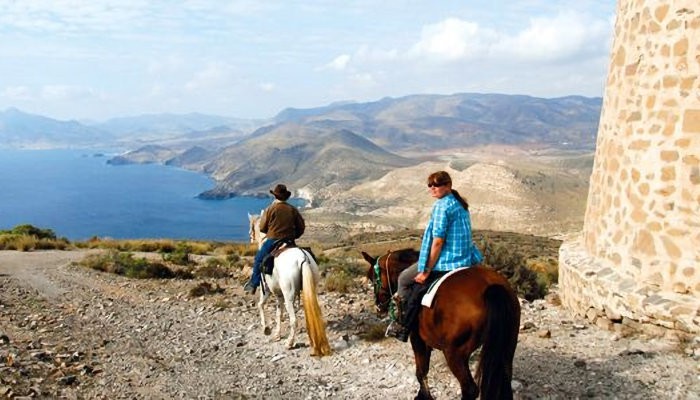
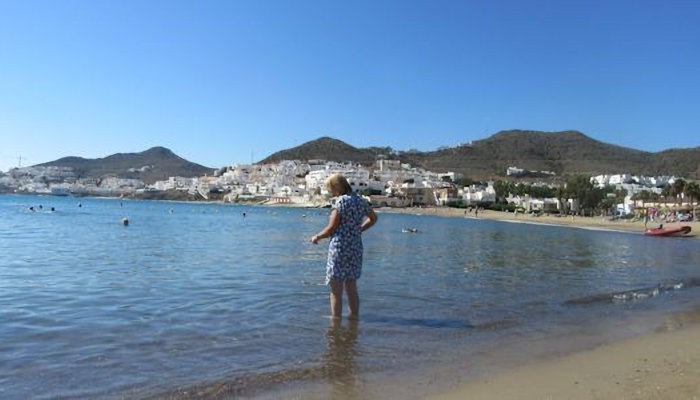
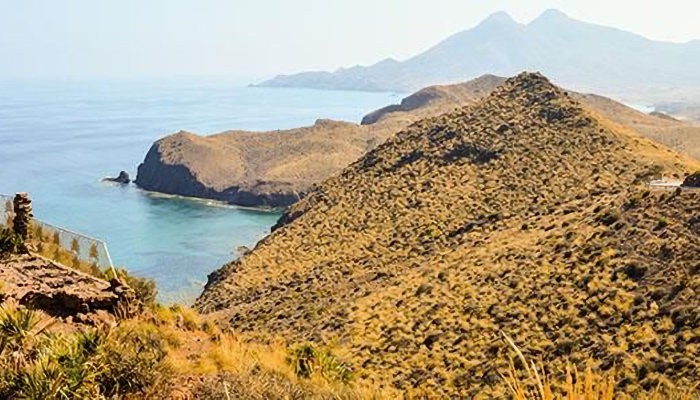





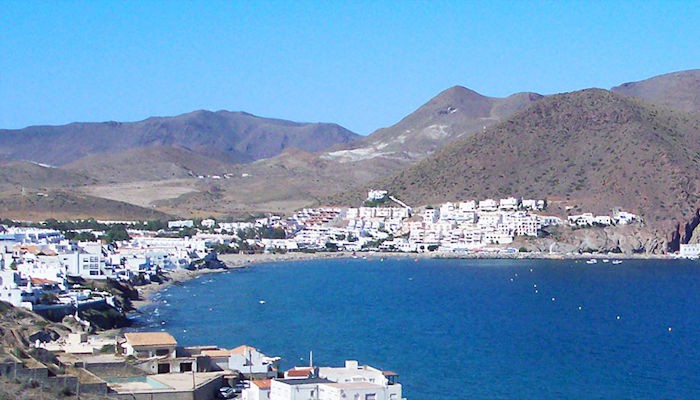


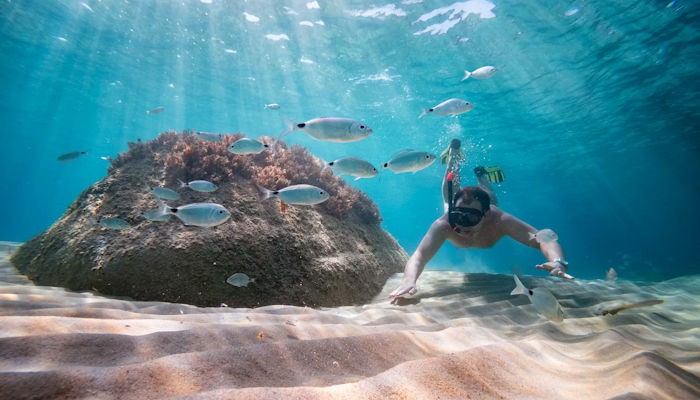



 1
1 2
2 3
3 4
4 5
5 6
6 7
7 8
8 9
9 10
10 11
11 12
12 13
13 14
14 15
15 16
16